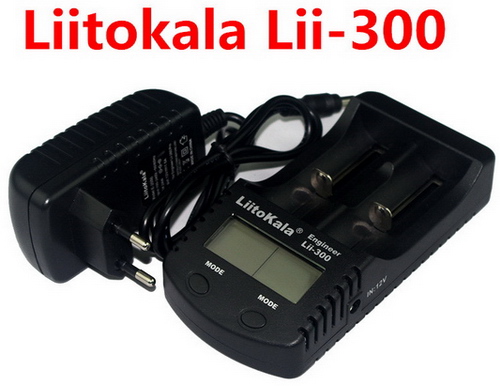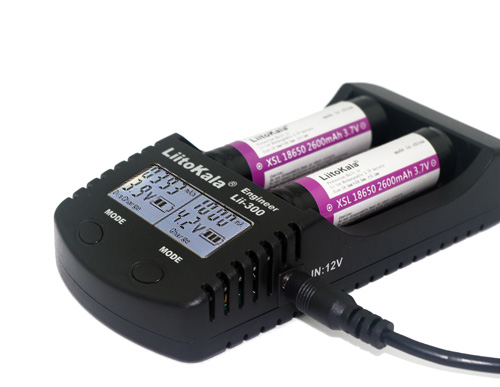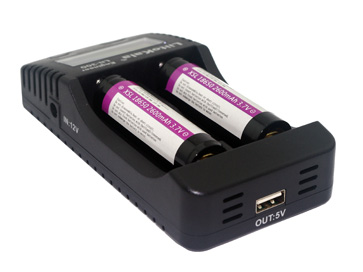Hello everyone!
This is just an overview to fill the gap before HKJ has done a proper review of this analysing charger. He has this charger on the way and he ordered it some hours after me from the same seller.
Thanks to HKJ for his excellent in-depth reviews which take a tremendous amount of time to do and write with all the graphs and photos!
Thanks to user luminarium iaculator and his review of previous model Engineer Lii-260 from which I’ve taken most of the layout and thoughts.
Thanks to all the users in this forum who have contributed and shared their work and knowledge to make this such an excellent place to be!
My initial thoughts are that LiitoKala Engineer Lii-300 is good analysing charger for me, but it possibly overcharges Li-ion batteries to ~4,23V.
PLUSES:
- Charges/discharges both Li-ion and Ni-Mh batteries (improvement over Lii-260)
- Total length of batteries supported: 72 mm (improvement over Lii-260)
- USB 5V output from one or both Li-ion batteries (improvement over Lii-260)
- Battery voltage detection
- Battery internal resistance detection called mR (but results vary for the same battery, depending on the manner they are inserted)
- Battery capacity detection
- Battery charging/discharging time
- Dual completely independent charging channels
- Dual independent displays
- Real time data (display instantly shows charging/discharging progress)
- Capacity, time, resistance, charging current remains on screen after charging/discharging has finished
- It can simultaneously charge in one channel while discharging in other
- Heat dissipation from charger is excellent.
- You can choose 500mA/1000mA charging current (in both charging/discharging mode)
- Discharge is always done at 500 mA
- Before analysing it tops up the battery
- After analysing the battery is automatically recharged
- While charging, shows the capacity charged into the battery
- Judging from the display, it discharges Li-ion batteries to ~2,7V
- Seems to do a good job on charging/analysing Ni-Mh batteries
- Easy to use
- Very nice led display
MINUSES:
- Display does not give 100% accuracy in readings so readings from this charger should be considered as approximate readings which are still good for a charger.
- It shows voltage as a rounded value and only one digit after the comma. It would be much better if there were two digits after the comma.
- It overcharges Li-ion batteries to ~4,23-4,24V
- Refuses to discharge some crappy Trustfire batteries (could very well be due to battery problem, whose protection circuit is cutting in)
- Does not support Li-Po batteries (not a minus for me as I don`t have any)
How does charging work? Very simple… You put battery in and it will automatically start in a charge mode. 500mAh will blink for few seconds on display… In blink mode you can press “mode“ switch which will turn on 1000mAh charging current mode. If you don’t touch anything it will start charging in default 500mAh mode.
It is very safe… When charging process is over it will write “FULL”,“charge end” on display and it will instantly terminate charging process leaving you all relevant data on display.
When charging process is finished charger will cool down instantly.
However charging it is not perfect… Charger overcharges to ~4,23-4,24V… (It will show you 4,2 on displays but multimeter will say something like 4,22-4,23 after resting)
Battery internal resistance, voltage detection, charging time, charging current, mah readings while charging/discharging. This is all shown on 2 completely independent displays in real time, and you can reach any data at any time while charging/discharging without any fear you will mess something up.
How does discharging/capacity testing works? Very simple… Once you put it in desired channel and wait few seconds while it tests internal resistance… When 500mAh charge blinking display appears press and hold mode button for 3-4 seconds, and then it will go to “discharge 500mAh blinking mode” in which with one more click you can turn to 1000mAh charge mode (it applies only to charging current before and after discharging). Discharging is always done in 500 mAh mode.
It will start discharging and it will give you real time readings. The most interesting part here is when it discharges battery it will instantly start charging process again. What does that mean? That means that you can put any battery in and charger will top it up, then discharge/test cell capacity and it will automatically charge it. So put your batteries in discharge mode and go to sleep and in the morning you will have freshly charged batteries with tested capacity.
Judging from the display it discharges battery to ~2,7V (under load), but after taking it out as soon it has stopped discharging, without a load battery reads as ~3,06V (this conclusion is based only on one battery).
I have been playing with this charger almost non-stop since December 23rd and it seems well built (haven`t looked inside), dissipating heat very fast and silently doing his job in the background. This is OK charger whose main plus for me is its ability to detect battery capacities and display of real time data.
I ordered this charger from Aliexpress. It came in a non-labeled box with a charger, power supply (12V/1,5A) and car power supply (no labels whatsoever).


